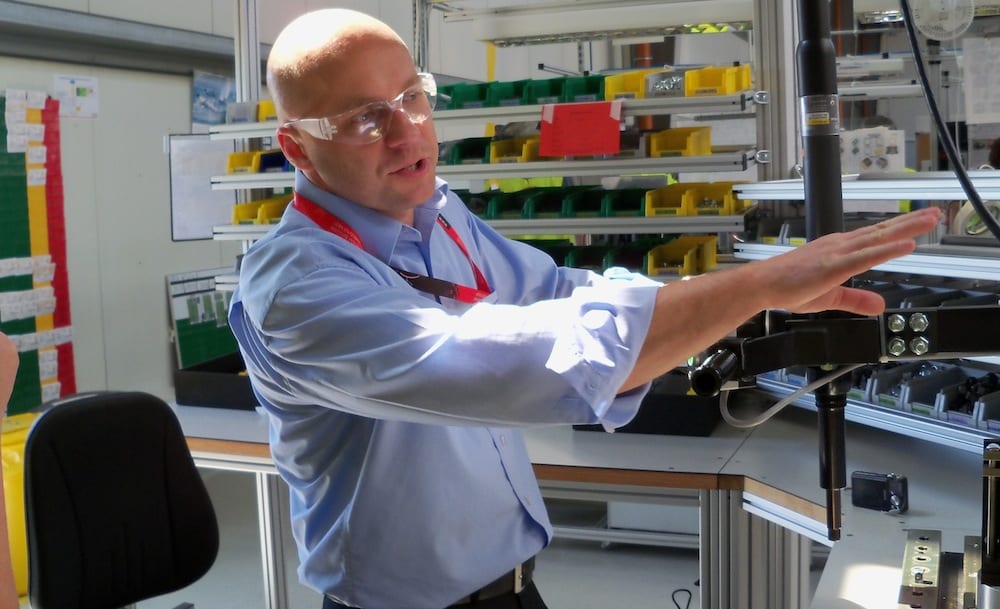
Why understanding standard work is critical to lean success
FEATURE – Standardization is often ignored and misunderstood, but is as critical to a lean transformation as continuous improvement. This piece by our Polish team explains why standard work is not to be neglected.
Words: Malgorzata Jakubik and Robert Kagan, Lean Enterprise Institute Polska
As no true lean person should walk by waste and ignore a chance for improvement, we felt the need to put together our reflections on things big and small that, while working with our customers, we have found to be common “speed bumps” or even show stoppers in a lean implementation. Whether systemic or tool-related, these obstacles have one thing in common: they tell our “war stories,” which we want to share with those on the road to lean, hoping they will warn them against frequent hazards others have struggled with.
STANDARDIZATION – THE REAL SILVER BULLET
We’ll admit it – at first this article might come across as a little wasteful. After all, if you are serious about turning your organization into a lean enterprise there is no way you don’t believe in standardization, right?
However, we didn’t pick this subject because we want to preach to the converted, but because of the way standardization is often approached by both the leaders of our organizations and by those who work with them.
Continuous improvement is the hero everybody hails. It’s what people want to get involved in. It brings the promise of unleashed creativity, immediate benefits, and great excitement. By contrast standardization (in many ways CI’s “twin sister”) is somewhat pushed into the background. It is often perceived, especially by leaders and the people supporting them at the higher levels of the organization, as something that has to happen for continuous improvement to succeed but that is fundamentally burdening, unexciting and perhaps even a little boring.
WHERE BOSSES MISS THE POINT
The messages that need to get across to the leaders of our organizations are:
- Your processes are not standardized just because you have instructions, written by some process engineer, hanging to a wall near the work stations or, even worse, in a computer system. Describing the steps of the process is certainly a good start but is not enough. If you are seriously thinking about reaping the benefits of standardization you need the full package. You need instructions on the sequence and method with key points, developed by the people who actually do the job; you need to understand the times, the layouts and the in-process stock. Oh… and standardization should also apply to managers’ and administrative tasks, by the way.
- When talking to people, you should always talk about standardization as well as improvement, so for them (and you) it becomes a mantra that these are two sides of the same coin.
- With all its benefits, standardizing processes and tasks in any organization is a lot of work – the only way to succeed at it is to:
- Start well - prioritizing processes that are common or so rare that people are very likely to make mistakes without a good reference.
- Standardize in a format that is simple to create, understand and update as the process changes. The formats may differ and be adjusted to your needs, but you must be careful: if it is easier not to get caught not following the standardized work than to actually update the documents in a controlled manner, people will always take the risk and skip the standard.
- Plan the development and updates of standards way into the future so people know that this is a regular, planned activity and there is no escape from it going forward.
- Engage as many people as your organizational structure allows into creating standards. What is a herculean task for a few is a manageable activity for many. Adjusting responsibilities of team leaders to accommodate that role might not be a bad start.
- Audit how well your people are following the standards, so they know you care about the stability, repeatability and quality of your processes and want to keep them alive as the true base for your improvements.
- And finally, the toughest of all - you have no right to blame your people for not following the standards and making mistakes if you have not provided them with good, clear standards, developed using an employee-engaging process, and if you have not trained the teams in how to use them. If people fail, it is because you have failed to organize their work properly and create clear expectations.
WHERE THE BOSS’ PEOPLE MISS THE POINT
People are right to expect that with standardization processes will become more transparent and inefficiencies will be easier to spot. Standardized work will reveal who follows the method and who does not. And it will be difficult to keep the tricks of the trade to yourself, as by definition they will be shared.
But, what is sometimes not said loud enough is that with standardization work becomes more stable and predictable, which translates into daily peace of mind for all employees, in a number of ways:
- If you happen to work in planning or maintenance, standardization will make your life easier as you will no longer be at the mercy of ever-changing conditions and you will have reliable data.
- If there is a mistake or a defect, with standardized work the focus will fall on the standard first and its causes will be looked for throughout the system, before any employee is blamed. The reference for doing the job right is now defined by a standard; it is no longer an arbitrary decision of the boss.
- It is actually easier to change when standards are in place, as there is a controlled, well-defined way to introduce improvement. And again, if the change process is followed, it is difficult for a boss to reject or ignore a good idea.
COACHING THE RIGHT STANDARDIZED WORK BEHAVIORS
In one of our workshop case studies we ask leaders to tell us what they would do and how they would react, if they saw - during one of their gemba walks - that someone was not following an agreed-upon, well-communicated standard of work and using his own, potentially better but “unauthorized” method instead. (Sounds familiar?)
Of course, participants quickly recognized the difficult position this questions put their leaders in – in such a scenario, they’d have to manage the situation in a way that sends the clear message that standards are to be followed, while keeping the employee’s creativity engaged.
So how would they react? There are normally two traps in which leaders can find themselves in these situations:
- The trap of strictness – they tell us they would immediately stop the employee, asking him “why he is not following the standard” and demand he goes back to the agreed method. Some even mention disciplinary measures should be taken towards the employee.
- The trap of praising – they tell us they would remind the employee that standards should be followed but they would first of all praise his creativity and let him continue working according to his new method, arranging for it to be assessed and standardized as soon as possible.
We trainers are naturally suspicious, however, and we are more inclined to believe that option 1 is the most commonly chosen, and option 2 is something participants just tell us because they think it is what lean consultants expect them to say. In reality, both options are tricks that are part of our coaching standardized work.
So, what do we suggest as a way out of these traps?
Whatever you do in this situation:
- Don’t attack – gather the facts before you ask the inevitable question of “why are you not following the standard?” Wouldn’t you first like to know if the employee knows that the standard exists and was trained in it before you blame him? You probably also need to know if he is aware of how to suggest improvements and how easy it is to do so.
- Be firm in insisting that the employee goes back to the agreed standard until the new one is checked and approved. But explain why. Make the employee understand that new standards happen out of logic not “because they say so.”
- Promise to follow up, and then do. Fix the local problem, if you find out it is local. Fix the systemic problem, if the case proves a give-away for some failure in your standardized work system. Don’t leave any loose ends as they will come back to haunt you elsewhere, in other processes.
As a final note, because we of course true believers in visual management, we decided to leave you with a summary image of the right and wrong approach to standardization and improvement. We hope it will come to your minds every time you consider cutting corners with standardization and rushing into improvements!

THE AUTHORS


Read more


FEATURE – There is a form of waste – complexity in raw and packaging materials – that adds costs to manufacturing without creating value, but it is often overlooked. The author explains what it is and how to banish it.


INTERVIEW – Instituto Lean Management in Barcelona is getting ready to host its first summit in a few years. We caught up with President Oriol Cuatrecasas to hear what attendees can expect.


INTERVIEW – At the recent UK Lean Summit, Ian Hurst and Keith Edwards of the Toyota Lean Management Centre ran an insightful workshop on standard work. We sat down with them to discuss standardization, respect for people and waste elimination.


FEATURE – The Covid-19 pandemic has exposed all the shortcomings of our current supply chains. Lean Thinking can make them more agile, aligned and adaptive.

